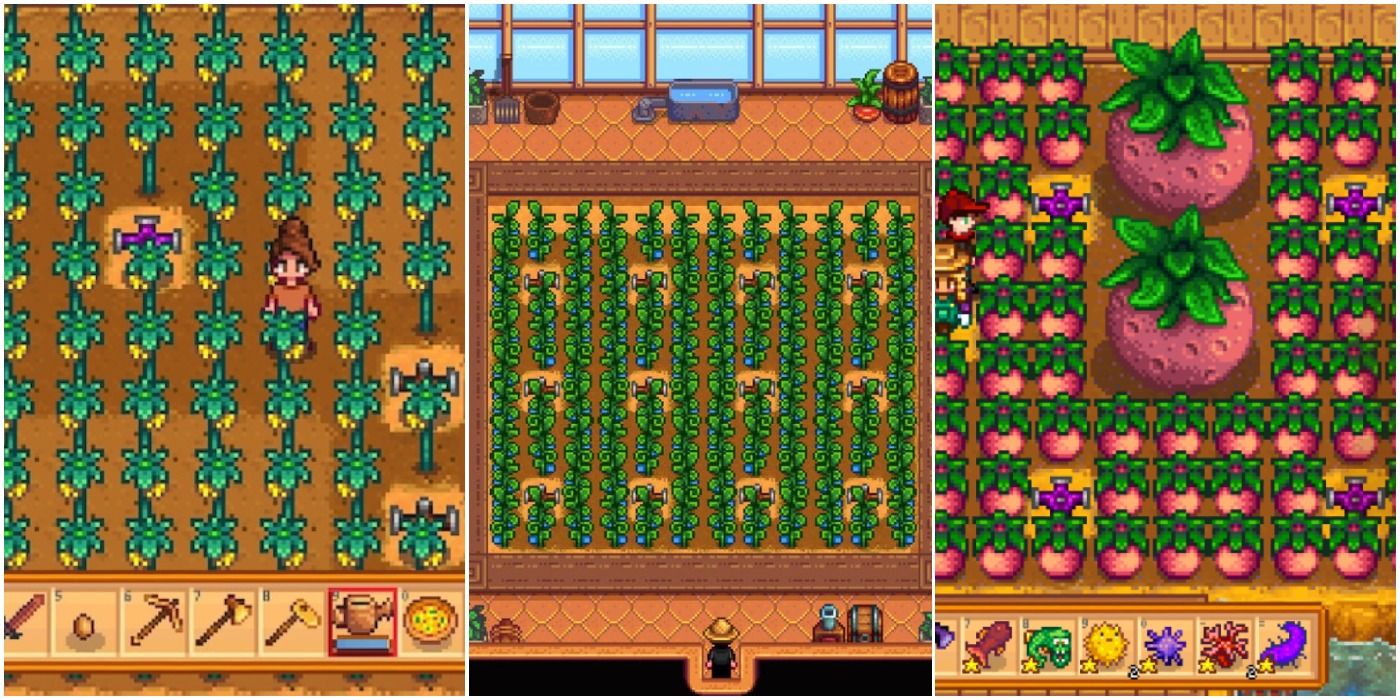
When Stardew Valley players first inherit their family farm, they might be puzzled to see a broken-down old building in the northwest area. Upon completing the Pantry bundles in the Community Center, however, this building's purpose becomes clear: It's a greenhouse, with a 12x12 plot of tillable soil.
RELATED: Stardew Valley: Bats Or Mushrooms For The Cave - Which Is Better?
After the Junimos restore this building, players can use this area to grow any crop in any season. When new players first gain this amazing resource, though, some aren't sure how to use it most effectively. Here's a list of crops that help turn the greenhouse into a money-making machine.
Updated July 11, 2021 by Demaris Oxman: Both longtime fans and newcomers alike continue to find solace in the peaceful, idyllic world of Stardew Valley. And for both new and experienced players, the greenhouse remains one of the best resources for making money on the farm, especially during the barren winter season. Many may be curious, though — just how much money can their greenhouse make them? And how can they maximize that profit? To that end, this list has been updated to include seed costs and product profits, as well as additional suggestions for greenhouse planting.
12 Mixed Seeds
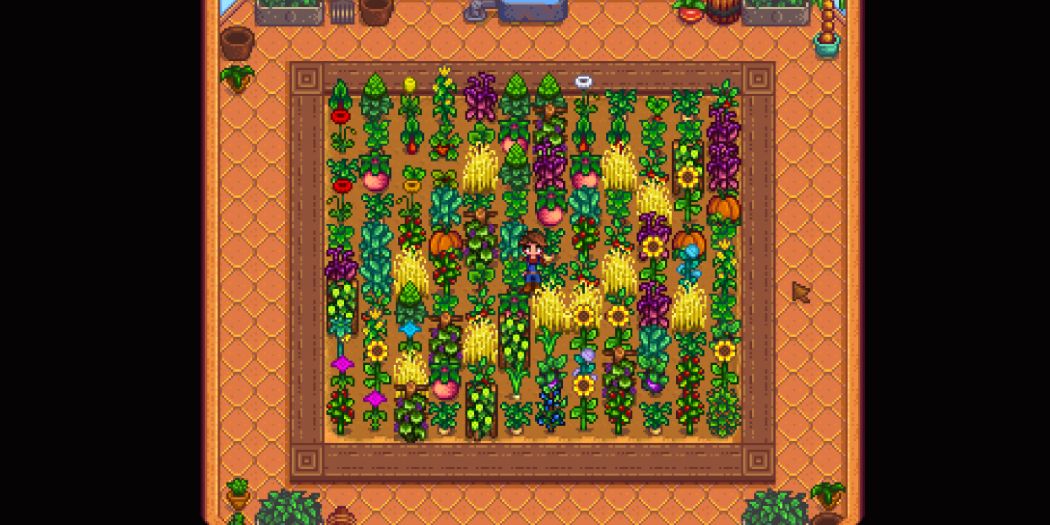
These are a cool choice for greenhouse farming, simply because it makes them more interesting. When planted outside, mixed seeds will grow into one of that season's crops. However, in the greenhouse, they may grow into a crop from any season.
Corn, peppers, wheat, eggplant—any of these and more could grow from mixed seeds. It's fun to try out in wintertime, especially early in the game. Plant them and see what grows; maybe use their products in the Seed Maker to save some money next season.
Costs & Profits
- Seed Costs: 0g. Players can find Mixed Seeds by cutting weeds, digging, mining, and more.
- Profits: Highly variable, depending on what grows from the seeds.
11 Pineapple
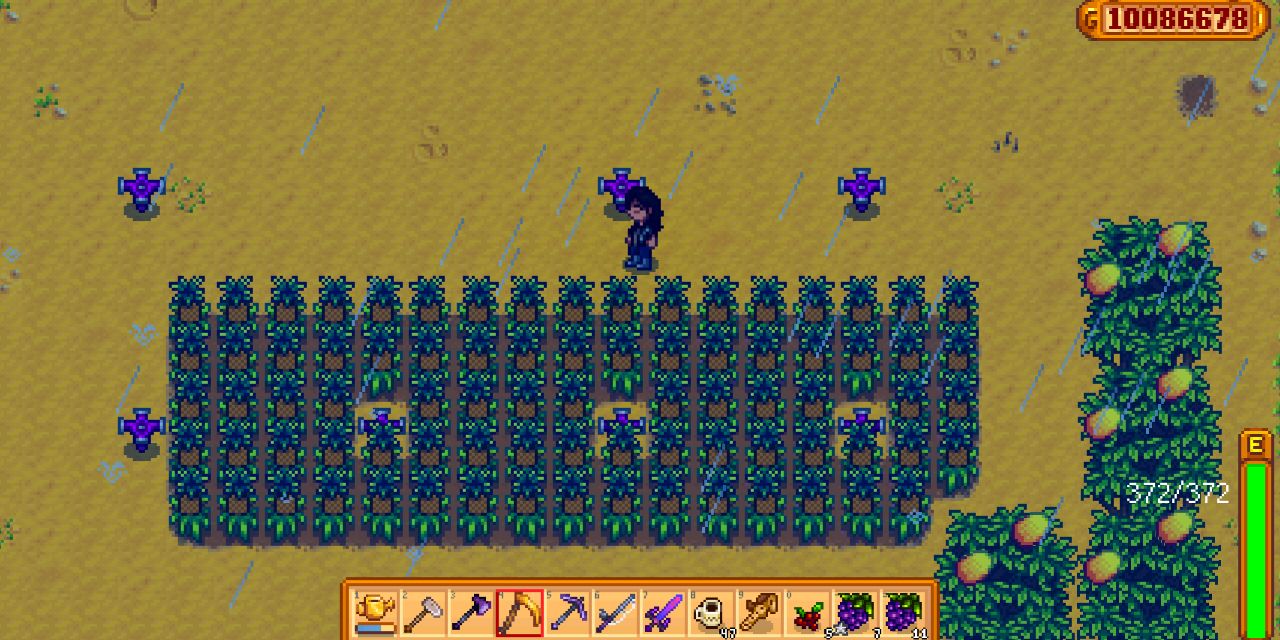
Since they take fourteen days to mature and seven days to regrow, it's a waste to plant pineapples on the farm during the summer. These tropical fruits do grow year-round on Ginger Island, but for those who prefer to keep their farming in one place, the greenhouse is a great option as well.
A regular pineapple harvest is vital for players trying to complete Caroline's "Island Ingredients" special order from the community bulletin board. She requests 100 of these golden fruits, so the greenhouse is a great space to utilize.
Costs & Profits
- Seed Costs: Purchasable from the Island Trader for 1 Magma Cap. Players may also find them when slaying monsters in the Volcano Dungeon, or inside Golden Coconuts.
- Produce Profits with/without the Tiller profession: 3o0g/330g (regular), 375g/412g (silver), 450g/495g (gold), 600g/660g (iridium)
- Jam Profits with/without the Artisan profession: 650g
- Wine Profits with/without Artisan: 900g (regular), 1125g (silver), 1350g (gold), 1800g (iridium)
10 Blueberries
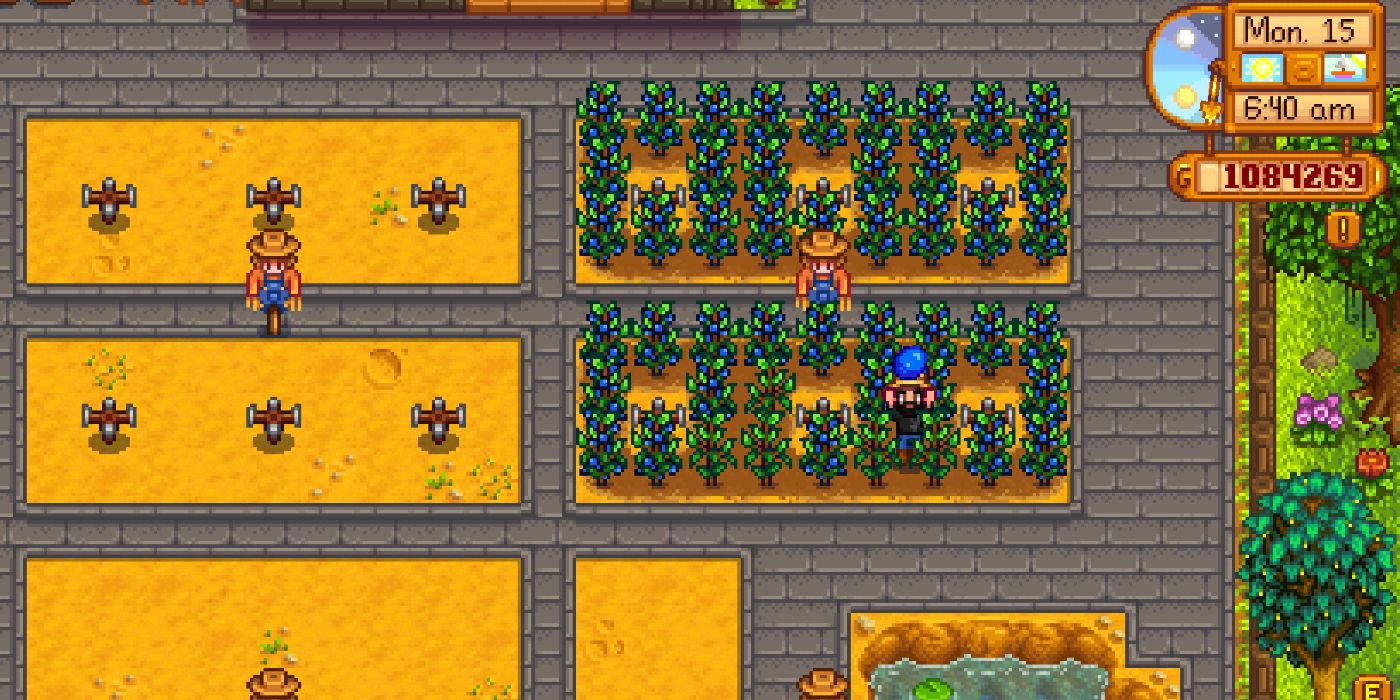
This summer crop takes a long time to reach its full potential, since it requires thirteen days to mature. Planting them indoors, however, allows the plant to remain standing and keep reproducing even after its usual season ends.
Since these plants produce multiple berries at each harvest, just a few bushes allow the player to collect hundreds of blueberries. Not only can the player turn these into profitable artisan goods, but they can also use them to make Blueberry Tart, a great gift for many villagers.
Costs & Profits
- Seed Costs: 80g at Pierre's
- Produce Profits with/without Tiller: 50g/55g (regular), 62g/68g (silver), 75g/82g (gold), 100g/110g (iridium)
- Jam Profits with/without Artisan: 150g/210g
- Wine Profits with/without Artisan: 150g/210g (regular,) 187g/261g (silver), 225g/315g (gold), 300g/420g (iridium)
9 Cranberries
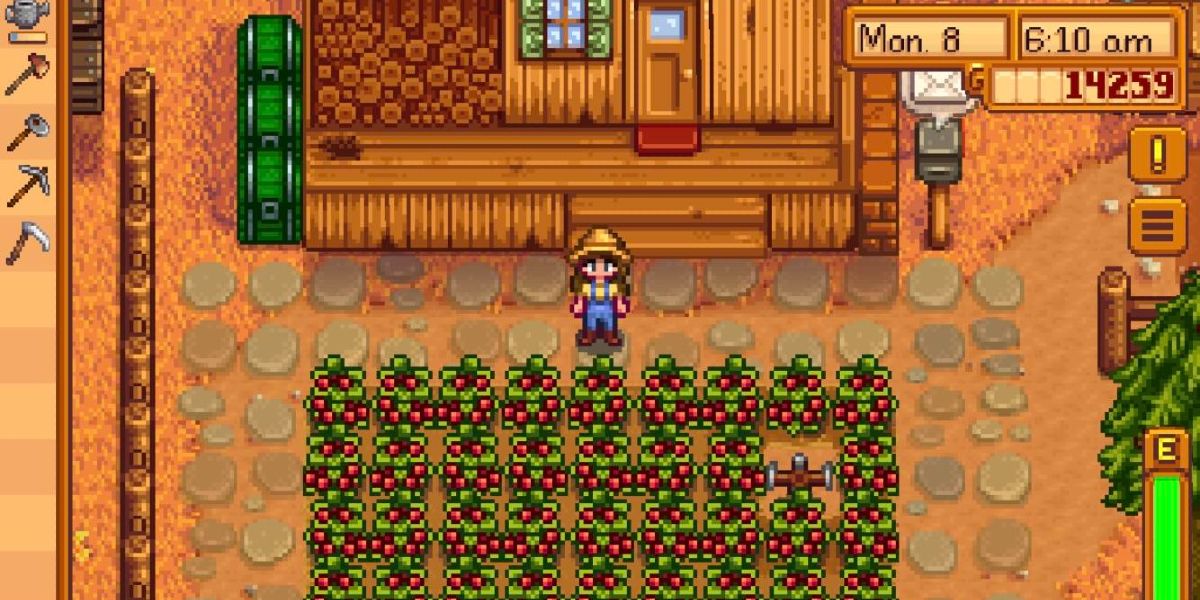
Like blueberries, these fall crops each yield multiple units at harvest, and continue reproducing upon maturity. However, they complete their growth cycle in about half the time that blueberries do, making them an even better option for greenhouse growing.
As with other fruits, players can place their cranberries in preserves jars or kegs to make valuable artisan goods. They’re also a key ingredient in various recipes, such as Stuffing, Cranberry Sauce, and Super Meal, all of which provide excellent buffs. Alternatively, gift these home-cooked dishes to neighbors to win them over!
Costs & Profits
- Seed Costs: 240g at Pierre's or 300g at JojaMart
- Produce Profits with/without Tiller: 75g/82g, 93g/102g, 112g/123g, 150g/165g
- Jam Profits with/without Artisan: 200g/280g
- Wine Profits with/without Artisan: 225g/315g, 281g/393g, 337g/471g, 450g/630g
8 Corn
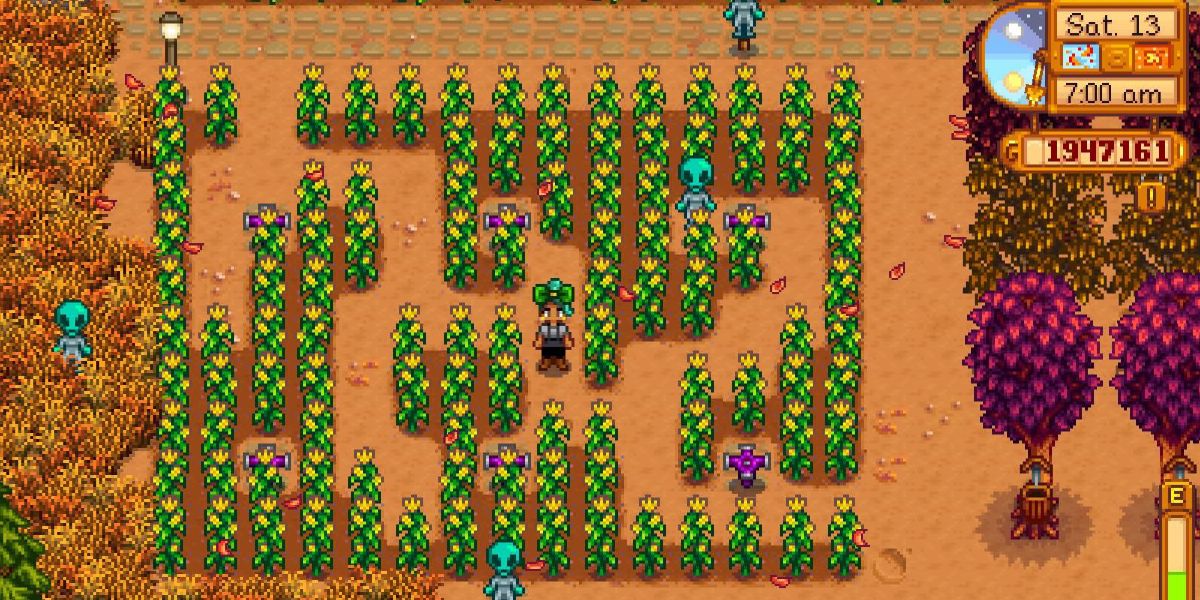
Just like in the real world, corn has a lot of versatile uses in Stardew Valley. It's used in several recipes, and can be pressed into oil which is essential for cooking. Growing it outside, though, can get a little tedious since it takes so long to mature.
Even though it grows in both summer and fall outside, greenhouse-grown corn lets the player reap greater rewards after that long wait. Using the final product in an oil maker allows the player to cook tons of helpful recipes.
Costs & Profits
- Seed Costs: 150g at Pierre's, or 187g at JojaMart
- Produce Profits with/without Tiller: 50g/55g (regular), 62g/68g (silver), 75g/82g (gold), 100g/110g (iridium)
- Pickles Profits with/without Artisan: 150g/210g
- Juice Profits with/without Artisan: 110g/156g
7 Giant Crops
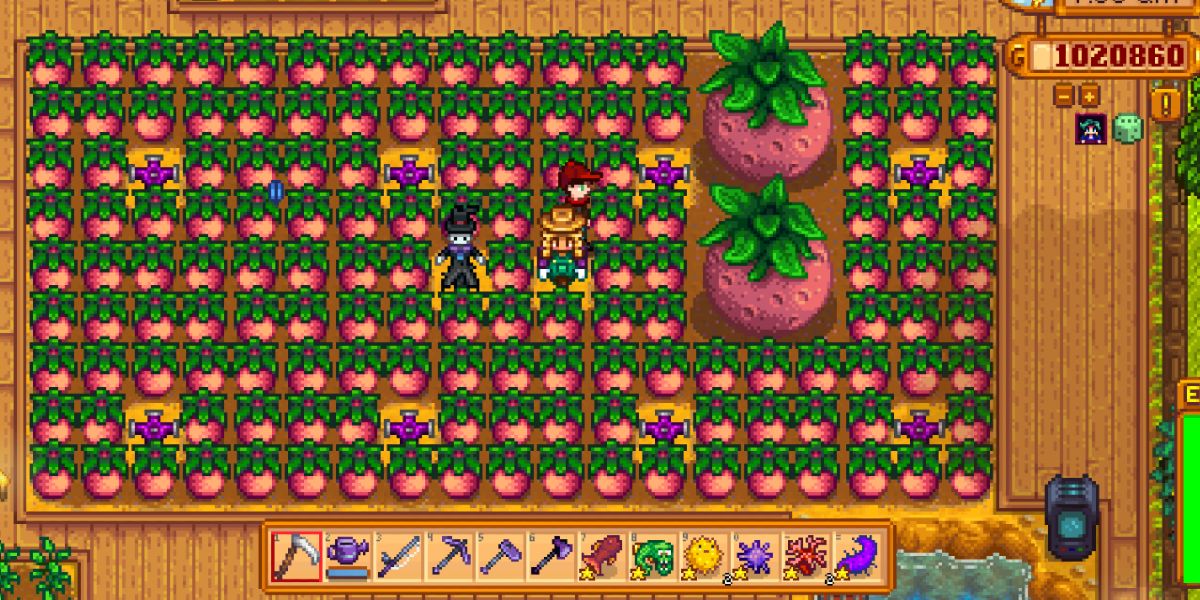
Cauliflower, melons, and pumpkins all have the potential to form giant crops. Any 3x3 square of these crops may, on any day once fully grown, mutate into a giant form. This can be broken apart with an axe to yield 15-21 items.
RELATED: Stardew Valley: How To Get Infinity Weapons
Players have to leave their plants alone for awhile in order for this to happen. However, regular crops die at the end of their season. Planting these items in the greenhouse allows the player to let them sit indefinitely, offering more chances at a giant crop.
Costs & Profits
- Seed Costs: Cauliflower and Melon are both 80g at Pierre's and 100g at JojaMart. Pumpkin seeds are 100g and 125g, respectively.
- Produce Profits with/without Tiller: Cauliflower – 175g/192g, 218g/239g, 262g/288g, 350g/385g. Melon – 250g/275g, 312g/343g, 375g/412g, 500g/550g. Pumpkin — 320g/352g, 400g/440g, 480g/528g, 640g/704g.
- Jam/Pickles Profits with/without Artisan: Cauliflower – 400g/560g. Melon – 550g/770g. Pumpkin – 690g/966g.
- Wine/Juice Profits with/without Artisan: Cauliflower – 393g/550g. Melon – 750g/1050g (regular), 937g/1311g (silver), 1125g/1575g (gold), 1500g/2100g (iridium). Pumpkin – 720g/1008g.
6 Cactus Fruit
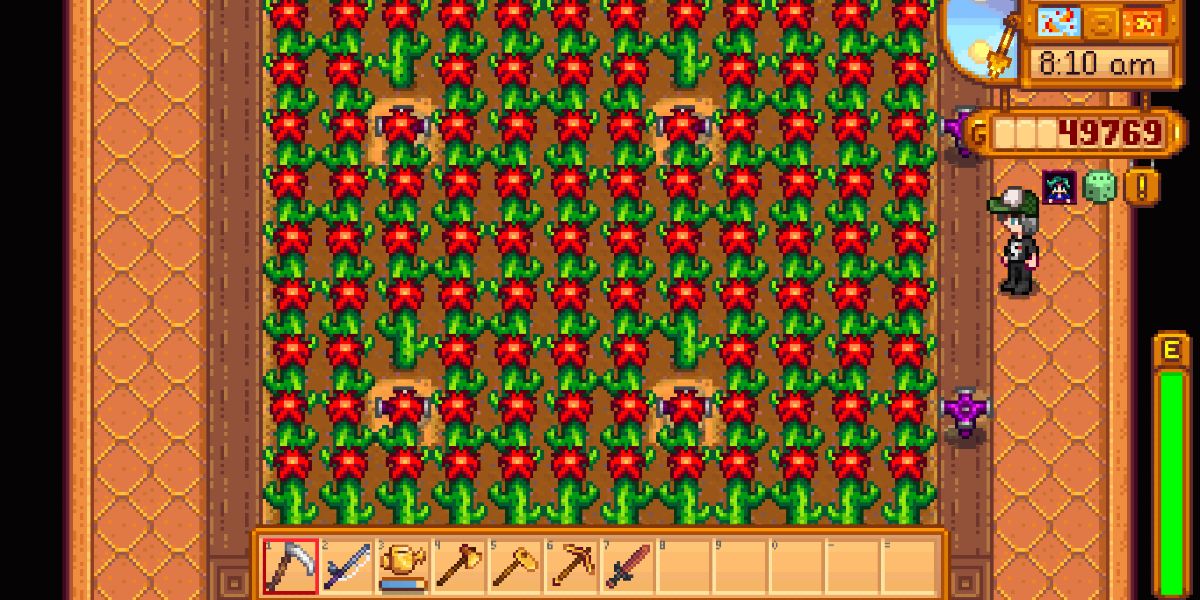
Since they've adapted to grow in the scorching air of Calico Desert, cactus fruits don't grow at all on the player's farm, even in summer. However, they flourish in the greenhouse, where they bear fruit every three days after maturing.
Though they're not massively valuable on their own, players can also turn their cactus fruit harvest into jelly with a preserves jar, or brew them into wine with a keg. Additionally, these desert delicacies make top-tier gifts for Pam, Linus and Sam.
Costs & Profits
- Seed Costs: 150g at the Oasis in Calico Desert
- Produce Profits with/without Tiller: 75g/82g, 93g/102g, 112g/123g, 150g/165g
- Jam Profits with/without Artisan: 200g/280g
- Wine Profits with/without Artisan: 225g/315g, 281g/393g, 337g/471g, 450g/630g
5 Starfruit
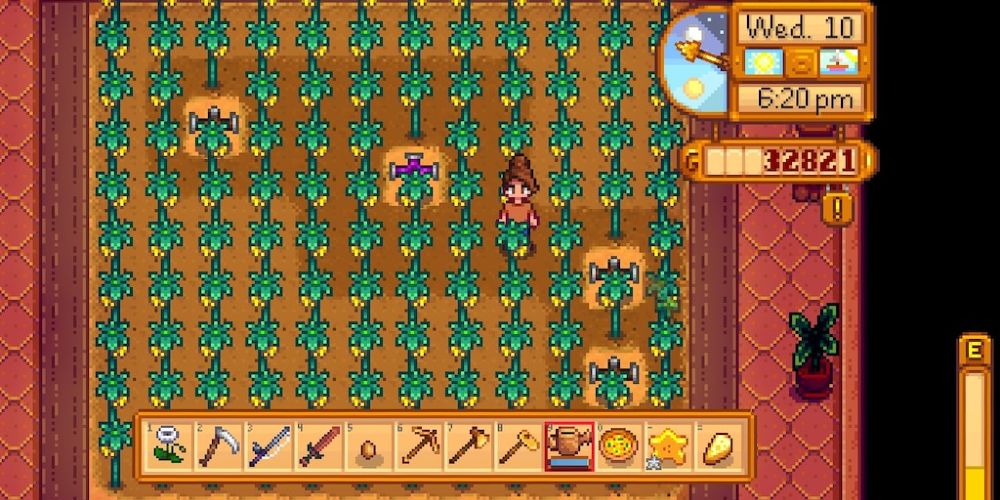
These summer seeds, purchased from Sandy, yield one of the game's most profitable crops. However, they take thirteen days to mature without the use of Speed-Gro. This makes them a great candidate for greenhouse farming, since the player is no longer limited to the summer season.
Once the player reaps the rewards of their harvest, they can sell their starfruit for high prices, or turn them into artisan goods as with cactus fruit. They can also use the Seed Maker to multiply the number of starfruit they grow.
Costs & Profits
- Seed Costs: 400g at the Oasis
- Produce Profits with/without Tiller: 750g/1050g, 937g/1311g, 1125g/1575g, 1500g/2100g
- Jam Profits with/without Artisan: 1550g/2170g
- Wine Profits with/without Artisan: 2250g/3150g, 2812g/3936g, 3375g/4725g, 4500g/6300g
4 Coffee
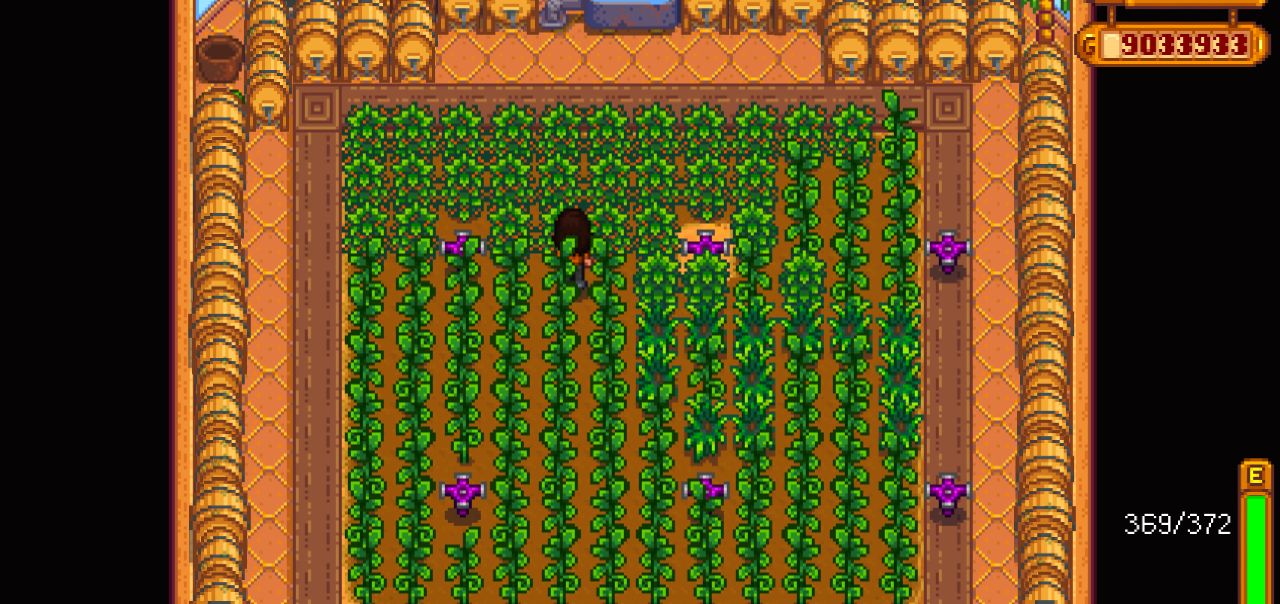
Speed boosts are invaluable in Stardew Valley, in every aspect of the game. If the player grows coffee in the greenhouse, they'll never have to move at normal speed again.
Coffee produces continually once grown, unlike single-harvest crops like starfruit. This means that in the greenhouse, they never die. Just a few coffee plants can provide a huge surplus of the delicious beverage, since they produce four beans every other day. Additionally, this can help players complete Qi's Culinary Challenge by making lots of triple espresso.
Costs & Profits
- Seed Costs: Players may find them dropped by Dust Sprites in the Mines. The Traveling Cart may also sell them for anywhere between 100g - 1000g.
- Produce Profits for Coffee Beans: 15g, 18g, 22g, 30g
- Artisan/Cooked Food Profits: 150g for Coffee, 450g for Triple Espresso
3 Ancient Fruit
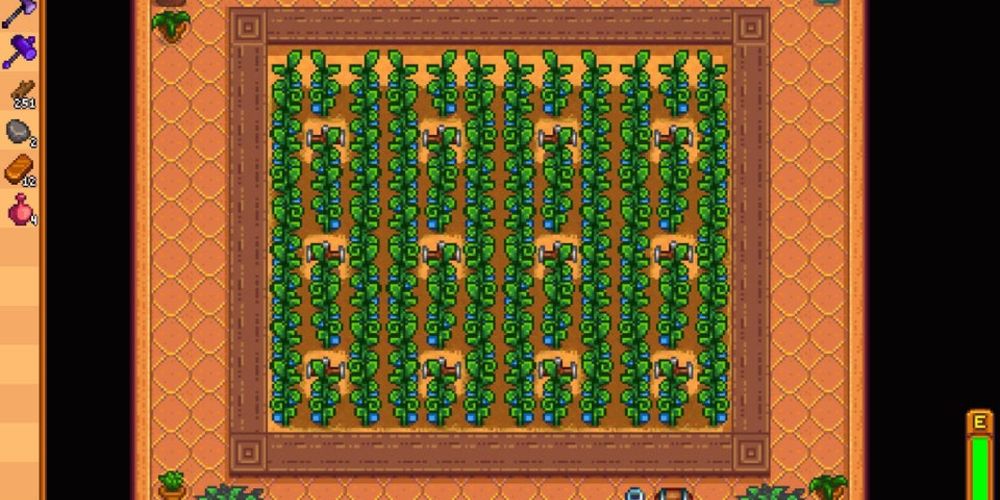
The player first acquires Ancient Seeds from Gunther, after donating the artifact of the same name. Though they can be planted in any season except winter, they take 28 days to grow. Like coffee, however, ancient fruit becomes immortal in the greenhouse since it's a reproducing crop.
RELATED: Stardew Valley: Everything You Need To Know About The Night Market
This crop is surpassed in value only by starfruit and sweet gem berries. Greenhouse-grown ancient fruit provides the player with an infinite source of income, making them one of the best options for this section of the farm.
Costs & Profits
- Seed Costs:
- Produce Profits with/without Tiller:
- Jam Profits with/without Artisan:
- Wine Profits with/without Artisan:
2 Fruit Trees
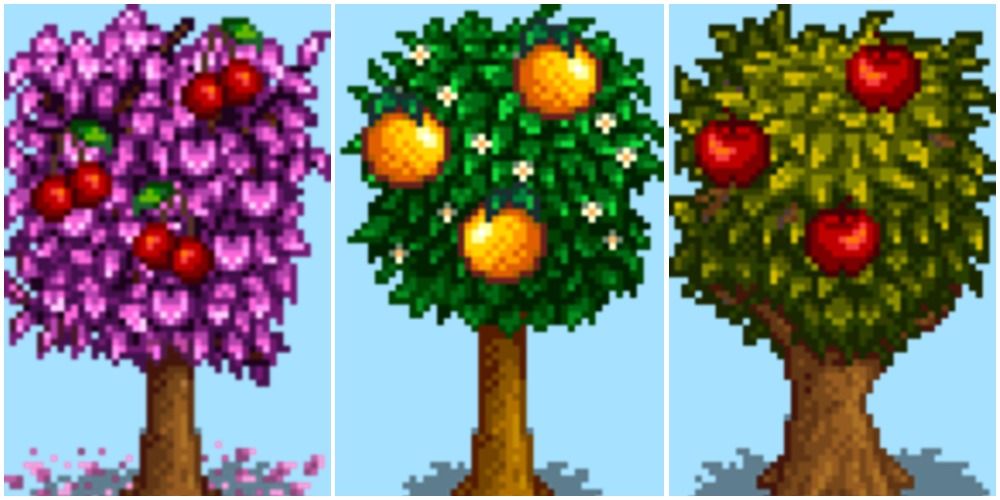
Fruit trees typically have a single season in which they produce fruit. Inside the greenhouse, though, they bear fruit year-round. This massively increases their profit margin, since it means they produce four times as much fruit as they would outside.
Any of the fruit trees are essential for a player to have on their farm (except for Bananas and Mangoes, which are best planted on Ginger Island). As with all other fruits, turning them into wine or jelly increases profit even further, especially with the Artisan profession. Orchard fruits are also high on every villager's gift list.
Costs & Profits
- Sapling Costs: Cherry – 3400g; Apricot – 2000g; Orange – 4000g; Peach – 6000g; Pomegranate – 6000g; Apple – 4000g
- Produce Profits with/without Tiller: Varies depending on fruit. Ranges from Apricot, 50g/55g at regular quality, to Peach and Pomegranate, both 140g/154g at regular quality.
- Jam Profits with/without Artisan: Ranges from Apricot, 150g/210g, to Peach and Pomegranate, both 330g/462g.
- Wine Profits with/without Artisan: Ranges from Apricot, 150g/210g at regular quality, to Peach and Pomegranate, both 420g/588g at regular quality.
1 Sweet Gem Berries
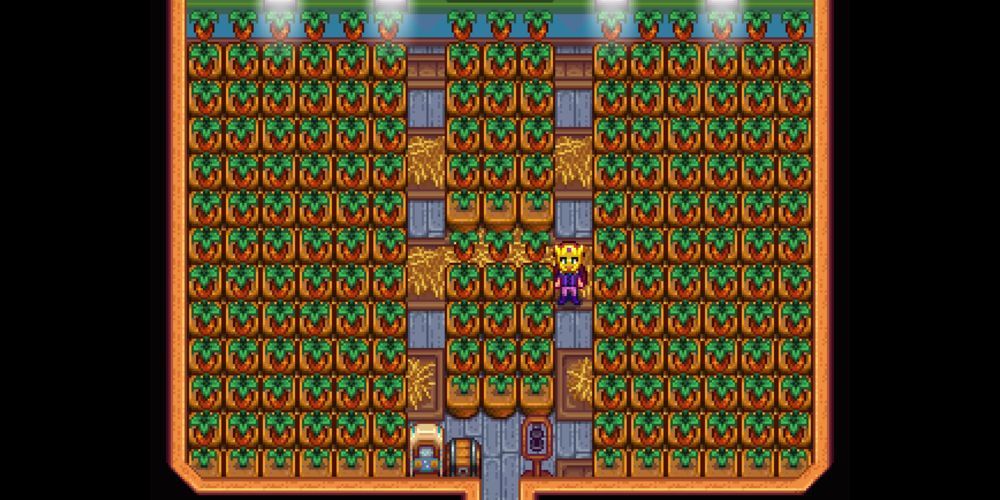
This crop grows agonizingly slowly. If the player doesn't plant the Rare Seed on the first day of fall, there's no hope of harvesting it. Planting it in the greenhouse, however, removes this pressure.
The player can give one Sweet Gem Berry to Old Master Cannoli's statue, allowing them to access a Stardrop. However, these berries are also very profitable if the player replicates them with the Seed Maker. Since they sell for 3,000g at their lowest quality, they're a great way to utilize the greenhouse.
Costs & Profits
- Seed Costs: Purchased for 1000g from the Traveling Cart.
- Produce Profits (does not benefit from Tiller): 3000g, 3750g, 4500g, 6000g
NEXT: The New Stardew Valley Board Game Brings New Meaning To Farm-To-Table

